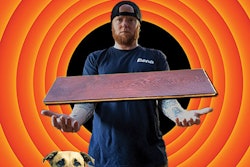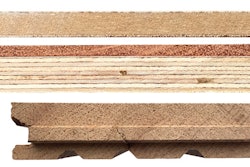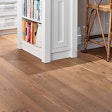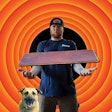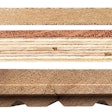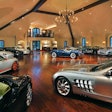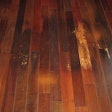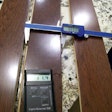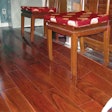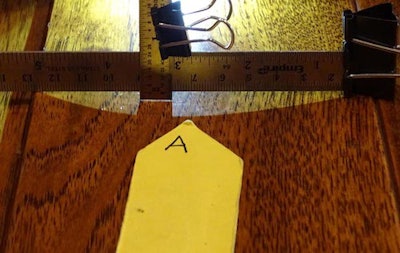
When you're talking about problems with wood floors, nothing gets more attention than moisture and its consequences, like cupping. But lack of moisture can be just as big a problem as too much moisture. This time of the year, when relative humidity (RH) starts plummeting to its lowest levels across most of the country, lack of moisture causes lots of problems for wood floors—and supplies plenty of business for inspectors such as myself.
Everyone in the wood flooring business knows (or should know) that during winter, wood floors, especially solid floors, tend to dry out, creating seasonal gaps (formerly referred to as "cracks") between boards. When customers call and complain about the gaps, most people in the business can confidently explain why the gaps are happening and why they will probably disappear when the RH increases in spring.
"Dry Cupping"?
There are other problems caused by low RH that are not so well-known, usually involving prefinished and engineered wood floors, and we see them constantly during this time of year. For example, we were called to do an inspection in Colorado Springs, Colo., on a prefinished engineered product. The first prefinished engineered floor in the home had cupped. The original floor was ripped out and a vapor retarder and new floor were installed. Yet, the same problem happened with the new floor. Of course, Colorado, like much of the West, is notorious for its arid climate. In this case, the RH inside was at only 4.5 percent.
This floor didn't need to be protected from too much moisture! It was suffering from a problem some people refer to as "dry cupping." But the problem is really just cupping, which happens when the top of the board is drier than the bottom of the board. Typically the cause of the imbalance is excess moisture from the subfloor. But it can also happen because of excessive drying on top of the board.
RELATED: Engineered Flooring and Low RH: What Can Happen and Why
"Dry cupping" is a problem I see all winter long with engineered products. It starts around the end of October and ramps up by January and February. The top layer—the wear layer— tends to dry out much faster than the core board material, and the thinner the wear layer, the faster it is likely to dry out. As the wear layer quickly dries, it wants to pull away from the bottom core material, which has a cross-grain construction, is a lot more stable and is securely fastened to the subfloor. The result is the appearance of a cupped floor. Most of the time you'll notice the corners lifting or curling first.
Cupping isn't the only problem that happens when engineered and prefinished floors become stressed due to low RH. Splits and checks also can appear. Splits are openings that go all the way through the board from top to bottom (you can drop a dime down it) and checks are similar but smaller (not the entire depth of the board). The stress in the boards can also cause wrinkles or ruptures in the finish.
Know What Can Happen
In many cases, the retailers, the contractors and the homeowners don't understand what low RH can do to a wood floor. Just like people, wood floors need normal living conditions to function properly. Typical recommendations are between 30 to 50 percent RH (ideally, 45) and a temperature between 60 to 80 degrees Fahrenheit (ideally, 68 to 72). Looking at the other woodwork in the house, like cabinets and trim, can give you a clue as to how comfortable the RH levels are for wood in the home.
In climates where low RH coincides with the heating season (such as the the Midwest), a whole-house humidification system that turns on with the heat can help. Whole-house humidification systems that aren't dependent on heat are available for arid climates such as the Southwest (at minimum, small portable humidifiers can also be used). Keeping humidity levels constant—even if they are on the low or the high side—is better than a roller coaster of RH levels. An added benefit is that as you make the wood floors more comfortable, the people living in the home will be more comfortable, too.
RELATED: Mixing Water And Wood: Why Relative Humidity Matters















